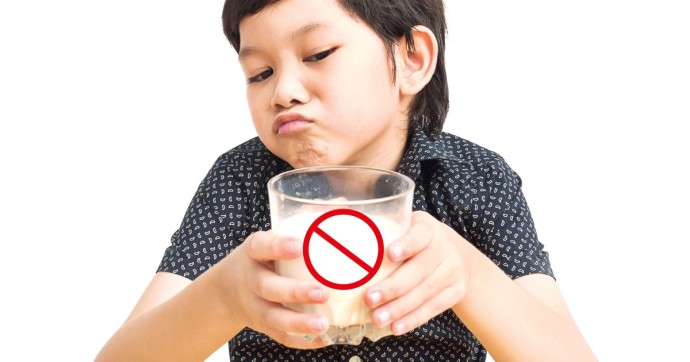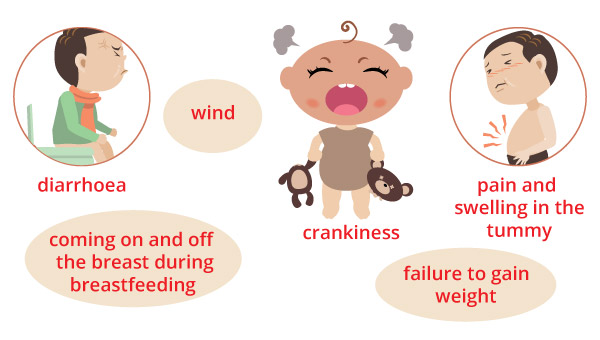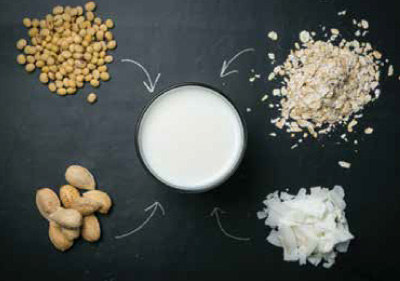An inability to digest milk properly is not an uncommon occurrence and this condition is called lactose intolerance. Lactose is a type of sugar found in milk and milk products. Unlike cow’s milk protein allergy (CMPA), which involves the immune system, lactose intolerance is a digestive problem. This means that while lactose intolerance can lead to tummy discomfort, it will not produce life-threatening reactions such as anaphylaxis.
Another difference is that milk allergies tend to appear within the first year of life, while lactose intolerance can start in childhood and gradually become more obvious in adulthood. A study of Malaysian adults found lactose intolerance prevalence was as high as 91%.
How does this happen?
Your child’s body breaks down the lactose in milk with an enzyme called lactase, which helps break down lactose into glucose and galactose. If his body does not produce enough lactase, it will lead to lactose intolerance, as his body cannot properly break down lactose in milk.
Do note that the symptoms of lactose intolerance will also vary depending on the amount of lactose that your child consumes, i.e. drinking more milk will result in either more severe symptoms and/or increase the number of symptoms experienced.
Often, signs and symptoms will occur anywhere between 30 minutes to two hours after drinking milk (or eating dairy products). The severity may range from mild to severe, and is largely dependent on the amount consumed and how well he can tolerate lactose. The common signs/symptoms of lactose intolerance are:
No matter what, if your child (especially in the case of infants) feels cranky or unwell, do everything you can to soothe and comfort him. In the case of lactose-intolerant mothers, it is safe for you to breastfeed your baby as it does not increase his risk of becoming lactose intolerant. Continue exclusive breastfeeding (unless advised not to by your doctor) for the first six months of life as studies have shown that this reduces the risk of cow’s milk protein allergy compared to feeding using infant formula during that time.
A temporary case of lactose intolerance can also occur if your child suffers a viral infection or if he suffers from any digestive conditions that cause inflammation in his intestines (e.g. celiac disease).
Diagnosing lactose intolerance
Your child’s paediatrician will start off by taking a medical, family, and diet history. A hydrogen breath test may be required – this is a simple test where your child breathes into a device that measures his breath’s hydrogen level before and after he drinks a sample containing a set amount of lactose. The test should only detect a small amount of hydrogen in the breath if he is not lactose intolerant. An increase in detected hydrogen would indicate lactose intolerance.
Another test used by paediatricians is to check your child’s stools, especially if he is too young and cannot perform the hydrogen breath test correctly. Stool acidity may indicate problems with lactose absorption, while another stool test checks for glucose in the stool, which points to undigested lactose. Depending on the severity of his symptoms, a biopsy (tissue sample) may be required. This is accomplished by a procedure called endoscopy, where a long, thin, flexible device is inserted via the anus to measure lactase levels in the intestines.
Getting his dose of calcium
How you handle your child’s lactose intolerance will depend largely upon how severe his condition is. If it is relatively mild, he may be able to tolerate small amounts of dairy or dairy products. Instead of giving him a full glass of milk, try giving him half a cup or less each time.
If your child’s lactose intolerance is severe enough that he cannot drink any cow’s milk, he can still get enough calcium from lactose-free dairy products, dark green leafy vegetables (e.g. spinach, broccoli, kale), nuts, beans, fish (e.g. sardines, salmon) and calcium-fortified food products. Do consult with his paediatrician before opting to give him calcium supplements as too much of it can cause constipation and may interfere with his body’s ability to absorb iron or zinc.
Alternatively, you may want to explore other milk substitutes such as soy, almond, rice, and oat milk. As a good source of calcium and protein, soy milk is a popular milk substitute, along with almond milk, which is a good source of calcium but lower in protein when compared with cow’s milk. Before giving your child any milk substitute, do check with his paediatrician first.









Comments